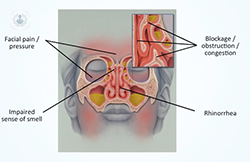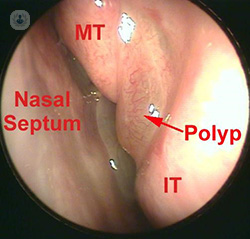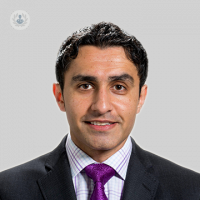Chronic rhinosinusitis: symptoms, treatment, and surgery explained
Written by:What is chronic rhinosinusitis?
Chronic rhinosinusitis is a debilitating disorder which is commonly presented in primary care, which can significantly reduce quality of life. It is defined by the presence of two or more symptoms for over twelve weeks. In order for chronic rhinosinusitis to be diagnosed, one symptom must be nasal obstruction/congestion, or nasal discharge (post-nasal drip or anterior rhinorrhea). The other symptoms include facial discomfort (pain or pressure) and a reduced sense of smell.

Is chronic rhinosinusitis associated with allergy?
Your doctor may enquire about associated symptoms of sneezing, itchy or watery eyes, watery rhinorrhea (runny nose, or mucus fluid in the nose), and having an itchy nose. They may then consider adding an antihistamine to the treatment regime and organise allergy testing, depending on the severity of symptoms
To investigate, your ENT doctor can use an anterior rhinoscopy, which is a thin, tube-like instrument used to look inside of the nose. They can then look for inflamed nasal mucosa, enlarged inferior turbinates (which divide the nasal airway into 4 separate air passages), and the presence of polyps or pus within the nasal passages.
What is the treatment for chronic rhinosinusitis?
You will be started on daily topical nasal steroid application, and saltwater washes (nasal saline irrigation), which help to keep the nasal passages open and clear away mucus. The response to this treatment is reviewed within 6 weeks. If symptoms have improved, then the treatment can continue.
However, if symptoms remain persistent then referral to an ENT specialist is recommended, as there is well-documented evidence supporting better long-term outcome with early surgical intervention.
What does surgery involve?
The ENT specialist will organize a CT scan and perform day case functional endoscopic sinus surgery, which uses a very thin endoscope and a high-definition camera to allow clear visualization of the inside of the nose. This allows the surgeon to better control the surgery and be very precise with nasal structures. The aim of surgery is to facilitate ventilation of the paranasal sinuses, should medical therapy fail to control or improve symptoms.

When should I seek immediate attention?
Patients presenting with symptoms of nasal bleeding on one side, crusting inside the nose, or an unpleasant odour will require an immediate referral to an ENT specialist for urgent investigation and intervention. In addition, swollen eyes, erythema (redness of the skin or mucuous membranes), visual disturbance, proptosis (protruding eyes) or ophthalmoplegia (weakness or paralysis of the eye) require urgent assessment. Furthermore, associated neurological symptoms of severe headache and meningeal irritation need immediate assessment.


